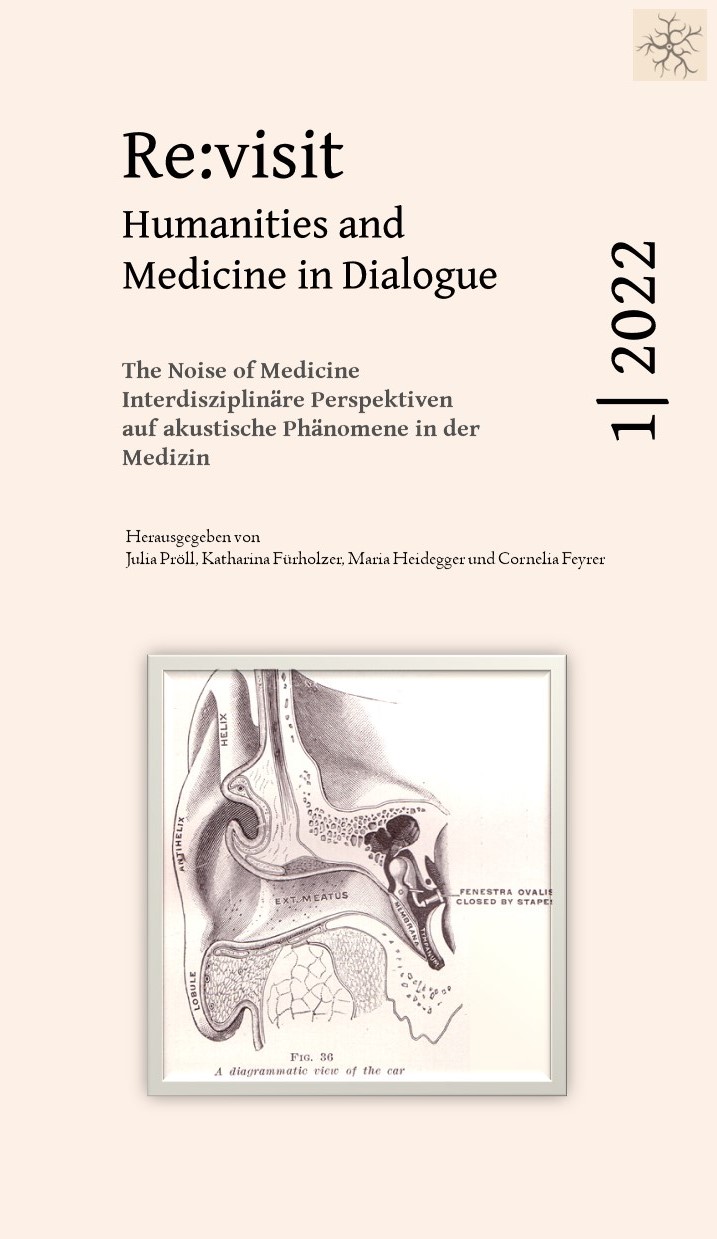„[...] dass die Schädigung der ruhigen Kranken durch die Unruhigen eine Grenze bildet, welche nicht überschritten werden darf.“
Raum, Körper und Sinne in der Psychiatrie um 1900
DOI:
https://doi.org/10.57974/Re:visit_2022_1.10Schlagwörter:
German psychiatry, Sensual History, noise, bed rest, permanent bath, isolation, drugsAbstract
Using the example of the establishment of the first surveillance wards of the Psychiatric Clinic in Heidelberg under Emil Kraepelin (1856–1926) in the spring of 1892, this paper explores the question of noise regulation by examining the entanglement of spaces, bodies, and senses. One of the problems that asylums used to face was the noise that the patients made by shouting, singing, whistling, crying, slapping against things, etc. As psychiatrists observed, one noisy patient could cause others to make noise and the sensory regime of a ward could collapse within a few minutes with a single voice rising up – a sensory regime that in mental asylums was oriented towards silence (as an expression of order) since the early 19th century and which was enforced at different times with different methods of sedating and immobilizing the patients, regulating their affects. Focusing on the entanglement of spaces, bodies, and the senses, this paper analyzes four treatment methods that were applied in the surveillance wards and were intended to calming the patients and upholding the sensory regime of the clinic: bed treatment, permanent bath, drugs, and isolation. Each of these methods was linked to a specific arrangement of the space (the sick room, the bathroom, the single room) and the patients’ bodies (lying in bed, lying in water, being locked in a room). These arrangements were directed towards influencing the patients’ behavior by modifying the sensory perception of the patient being treated and consequently also of those around him or her. The close connection of the different rooms in the surveillance wards should allow, through the rapid transfer of noisy patients from one room to another (and from one sensory regime to another) to establish, at least temporarily, a boundary between the (more) quiet and the (more) noisy patients. Finally, the article focuses on the different sensory regimes that day (visual) and night (acoustic) unfold and the shift in the way noise was perceived, depending on whether itwas day or night. It elaborates on how day and night not only framed the sensual perception, but also the possibilities of the nurses to (re-)act on the restlessness – including the noisiness – of the patients. This article highlights the ways in which sensory experience is tied to material configurations and the ways in which institutional power is exercised by manipulating the senses.
Downloads
Veröffentlicht
Ausgabe
Rubrik
Lizenz
Copyright (c) 2022 Monika Ankele

Dieses Werk steht unter der Lizenz Creative Commons Namensnennung 4.0 International.



